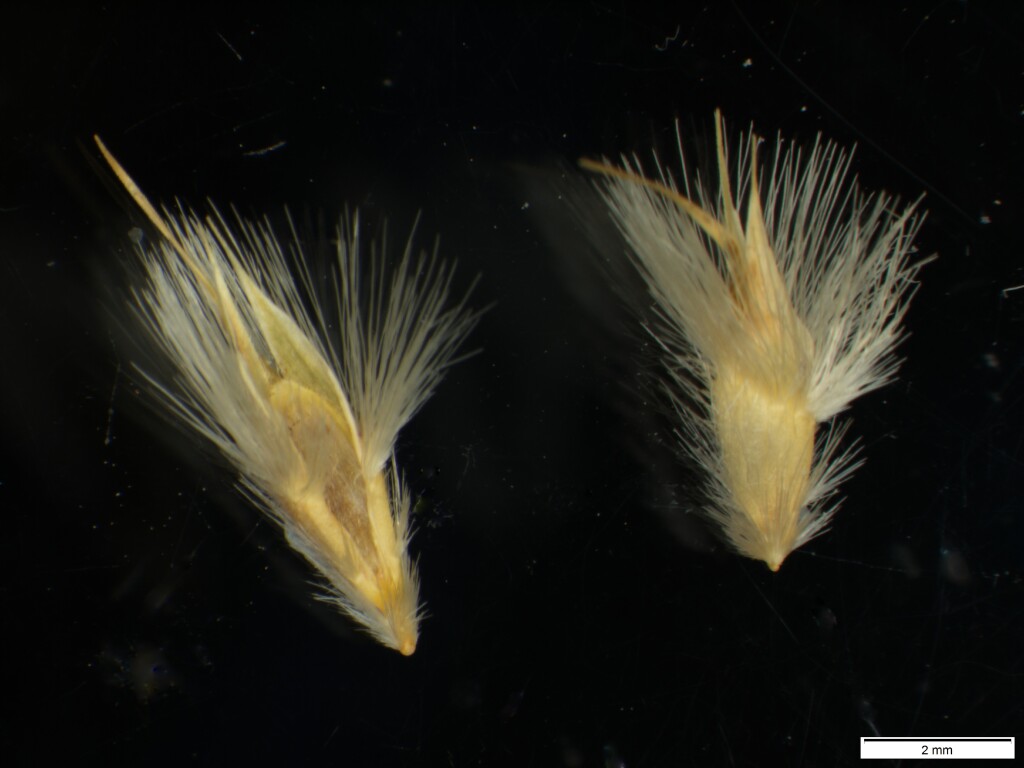Rytidosperma carphoides
(Benth.) Connor & Edgar Short Wallaby-grassSmall tufted perennial. Culms to 40 cm high. Leaves with sparse short hairs; blade closely inrolled, to 20 (but usually less than 10) cm long and 1 mm wide. Panicle ovate, compact, sometimes the lower branches deflexed, mostly 2–4 cm long. Spikelets 2–5-flowered; glumes subequal, with rather broad, purplish marginal bands, acute 7–10 mm long; lemma broad, 3–5 mm long, moderately to densely covered on the dorsal surface with hairs c. 1 mm long with a longer (to 4 mm) upper series, surface granular but only apparent on less hairy specimens; lateral lobes erect, 2–4 mm long, broadly tapered to a short point; central awn shortly exceeding lateral lobes; palea broadly obovate, firm, shortly exceeding sinus. Flowers Oct.–Mar.
LoM, MuM, Wim, VVP, VRiv, MuF, GipP, OtP, Gold, CVU, GGr, DunT, NIS, EGU, HSF, HNF. SA, NSW, Tas. Most commonly occurring on the basalt plains, but also on alluvium and shallow soils of the north and north-east with a disjunct occurrence near Dellicknora in the far east.
The variety angustius (Vickery) Connor & Edgar was distinguished as having narrower glumes, longer, more tapered lateral lemma lobes, and 2–3 florets per spikelet, with a tendency for plants to be somewhat taller than normal. However, the differences are hardly discontinuous from the typical variety and its recognition has not been supported by recent treatments. It has been recorded from basaltic areas immediately north and west of the greater Melbourne area.
 Spinning
Spinning


